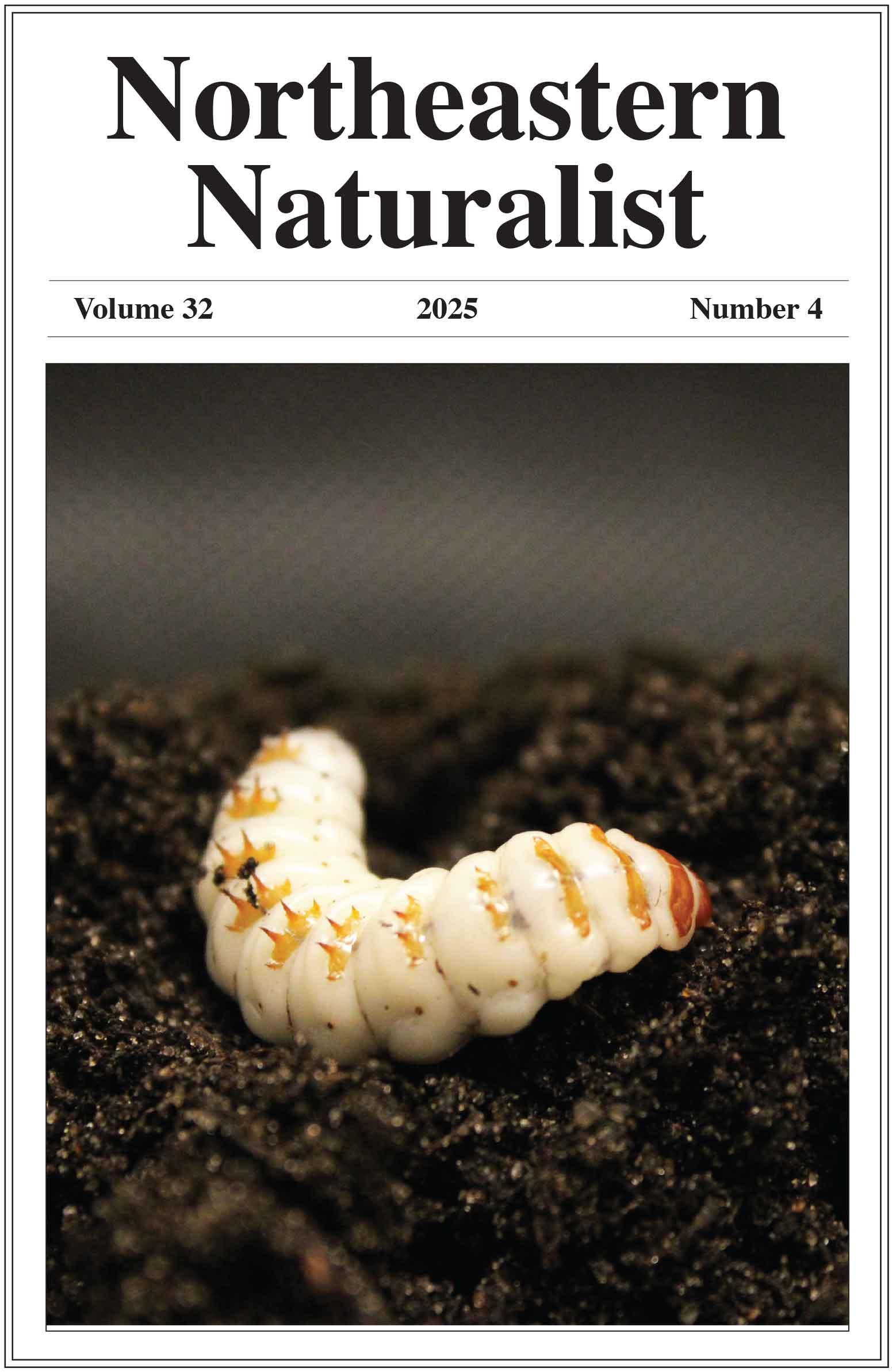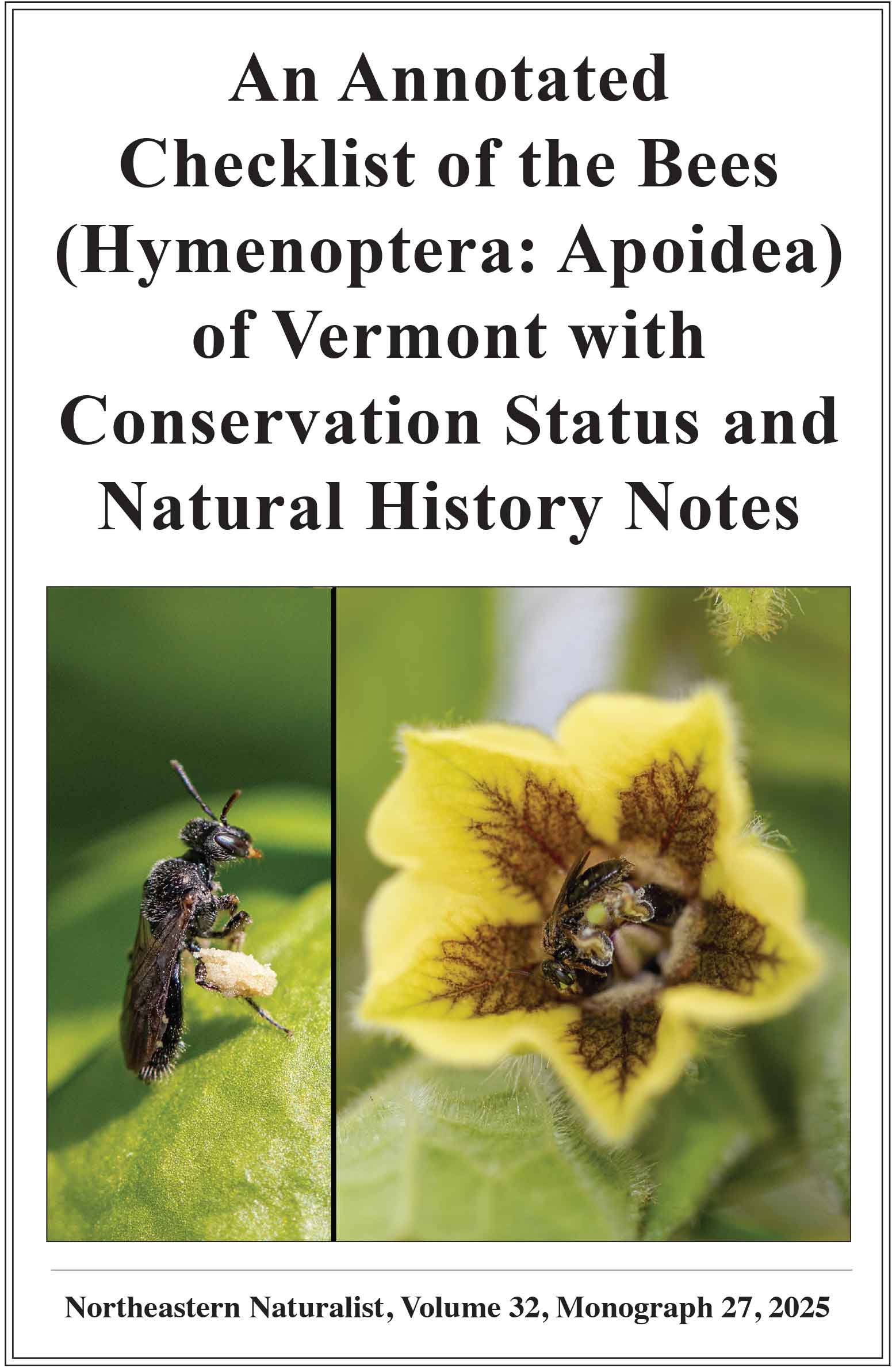The Effect of Myiasis on Eastern Box Turtle (Terrapene carolina carolina) Body Condition, Movement, and Habitat Use at Camp Edwards in Massachusetts
Andrew B. Gordon Jr.1,*, Donovan Drummey2, Anthony Tur2, Annie E. Curtis3, Jacob C. McCumber3, Michael T. Jones4, Jeremy C. Andersen1, and Graziella V. DiRenzo1,5
1Department of Environmental Conservation, University of Massachusetts, Amherst, MA 01003. 2US Fish and Wildlife Service, Science Applications Program, Northeast Region, Hadley MA 01035. 3Natural Resource Office, Massachusetts Army National Guard, Camp Edwards, MA 02542. 4Massachusetts Division of Fisheries and Wildlife, Westborough, MA 01581. 5US Geological Survey, Massachusetts Cooperative Fish and Wildlife Research Unit, University of Massachusetts, Amherst, MA 01003. *Corresponding author.
Northeastern Naturalist, Volume 31, Special Issue 12: T55–T76
First published early online: 19 July 2024
Abstract
In 2020, natural resource managers at Camp Edwards, Barnstable County, MA, observed Terrapene carolina carolina (Eastern Box Turtle) individuals infected by myiasis, where parasitic flesh flies larviposit into the living tissue of a host. The hypothesized parasite was Dexosarcophaga cistudinis, but its impacts on the host’s body condition, movement, and habitat use were unknown. Our objectives were to identify the parasite at Camp Edwards and to compare the body condition, movement, and habitat characteristics at capture locations of Eastern Box Turtles for infected and noninfected individuals. We radio-tracked turtles weekly and encountered 48 individuals from May to August 2022 at Camp Edwards, MA. Upon capture, we recorded turtle infection status, mass, carapace length, shell surface temperature, GPS location, and habitat characteristics of the capture location. We confirmed D. cistudinis as the parasite and found that myiasis-infected turtles had a significantly higher shell temperature (27.92 ± 5.28 °C) than noninfected turtles (26.77 ± 5.64 °C). However, we did not find an effect of myiasis on body condition, habitat use, or average daily distance moved. Collectively, our results suggest that infected turtles may exhibit behavioral fever, a mechanism by which ectotherms move to warmer microclimates to raise their body temperature in response to infections. Eastern Box Turtles at Camp Edwards may be able to use behavioral fever in response to myiasis infection because of the habitat mosaic made available through detailed habitat-management regimes.
![]() Download Full-text pdf (Accessible only to subscribers. To subscribe click here.)
Download Full-text pdf (Accessible only to subscribers. To subscribe click here.)
Access Journal Content
Open access browsing of table of contents and abstract pages. Full text pdfs available for download for subscribers.
Issue-in-Progress: Vol. 33(1) ... early view
Check out NENA's latest monograph and Special Issue:













 The Northeastern Naturalist is a peer-reviewed journal that covers all aspects of natural history within northeastern North America. We welcome research articles, summary review papers, and observational notes.
The Northeastern Naturalist is a peer-reviewed journal that covers all aspects of natural history within northeastern North America. We welcome research articles, summary review papers, and observational notes.